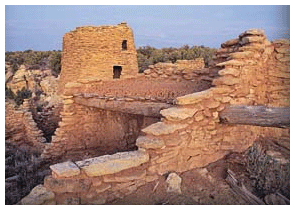- Latest Archaeology Updates
- Importance and applicability
- Famous Archaeologists
- Museums Collections
- Site Map
- World Heritage Sites
- World History Monuments
- Archaeological Organizations
- World Atlas of Archaeology
- Forensic Investigation and Geophysics
- Contact Us
- Movies based on Archaeology
- Frequently Asked Questions
- Archaeological discoveries
- Tell a Friend
- Archaeological Abbreviations
- Gallery Collections
- Famous-Museums site map
- Famous-archaeologists site map
- Archaeological Monuments site map
In contrast to the antiquarianism of classical archaeology, anthropological archaeology today is concerned with culture history (i.e., the chronology of events and cultural traditions) and the explanation of cultural processes. A variety of different dating techniques, both relative (e.g., stratigraphy ) and absolute (e.g., radiocarbon, obsidian hydration, potassium-argon), are used to place events in time. Attempts at explaining evolutionary processes underlying prehistoric remains began with the conclusion advanced in 1832 by the Danish archaeologist Christian Thomsen that cultures may be divided into stages of progress based on the principal materials used for weapons and implements. His three-age theory (the Stone Age, Bronze Age , and Iron Age ) was essentially based on prehistoric materials from Scandinavia and France.
Concerted investigations began in the mid-19th cent. with the stratigraphic excavation of such remains as the lake dwelling , barrow , and kitchen midden . At first the sequences of culture change uncovered in Western Europe were generalized to include all of world history, but improved techniques of field excavation and the expansion of archaeological discoveries in Africa, Asia, and the Americas challenged the universality of rigid classifications. Technological traditions ceased to be regarded as inevitable concomitants of specific cultural stages.
Later interpretations of prehistoric human life emphasize cultural responses to changing demographic and environmental conditions (see ecology ). Thus the Paleolithic , Mesolithic , and Neolithic periods are evaluated in terms of subsistence technologies, and explanations are sought for the causes underlying these transitions. Advances in the recovery and analysis of botanical remains have allowed investigators to model changes in the prehistoric environment with increasing precision, improving the accuracy of such explanations. Paleobotany, the analysis of ancient plant remains, and ethnobotany, the study of the cultural utilization of plants, therefore play a vital role in modern archaeology. Faunal analysis, the recovery and analysis of animal remains such as bone, also plays an important part in the study of prehistoric ecology and subsistence patterns. The careful analysis of botanical and faunal material, combined with advances in the analysis of genetic material, have led to the detailed understanding of the process of the domestication of plants and animals in both the Old and New World. Contemporary archaeologists are also concerned with the emergence of various forms of complex social organization, including chiefdoms, class stratification, and states. Among the most important work done in the mid-20th cent. was that of Louis and Mary Leakey , who located the skeletal remains of humans in East Africa dating back 1.7 million years (see human evolution ). In recent years, a number of archaeologists have turned from traditional concerns and have made efforts to reconstruct ideological elements of extinct cultures.
Modern museums with valuable collections include the Metropolitan Museum and the American Museum of Natural History in New York City; the British Museum; the Louvre; national museums in Denmark, Norway, and Sweden, rich in remains of the Iron Age; the Vatican and Capitoline museums, Rome; collections from Pompeii and Herculaneum at Naples, Italy; and museums in Athens, Cairo, and Jerusalem. Many universities have established schools and museums of archaeology. Organizations such as the National Science Foundation, the Smithsonian Institution, and the National Geographic Society in the United States promote archaeological studies.
-
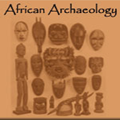 African Archaeology Africa has the longest record of human activity of any part of the world and along with its geographical extent; it contains an enormous archaeological resource. Scholars have studied Egyptology for centuries but archaeologists have only paid serious attention to the rest of the continent in more recent times.
African Archaeology Africa has the longest record of human activity of any part of the world and along with its geographical extent; it contains an enormous archaeological resource. Scholars have studied Egyptology for centuries but archaeologists have only paid serious attention to the rest of the continent in more recent times. -
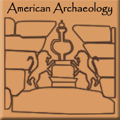 American Archaeology Archaeology of the Americas is the learning of the archaeology of North America, Central America (or Mesoamerica), South America and the Caribbean, which is to say, the pre-history and Pre-Columbian history of Native American peoples.
American Archaeology Archaeology of the Americas is the learning of the archaeology of North America, Central America (or Mesoamerica), South America and the Caribbean, which is to say, the pre-history and Pre-Columbian history of Native American peoples. -
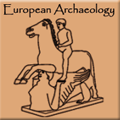 European Archaeology In terms of area, Europe is the world's second smallest continent, with an area of 10,400,000 kmē (4,000,000 square miles), making it slightly larger than Australia.
European Archaeology In terms of area, Europe is the world's second smallest continent, with an area of 10,400,000 kmē (4,000,000 square miles), making it slightly larger than Australia. -
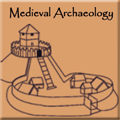 Medival archaeology The period covers the commotion caused by the fall of the Medival archaeology Roman Empire and cultures such as the Vikings, Saxons and Franks.
Medival archaeology The period covers the commotion caused by the fall of the Medival archaeology Roman Empire and cultures such as the Vikings, Saxons and Franks. -
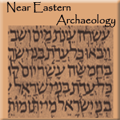 Near Eastern Archaeology Near Eastern Archaeology is a wide generalised application, and is divided into further regional sub-branches, the archaeology of modern states in the region or along broad thematic lines.
Near Eastern Archaeology Near Eastern Archaeology is a wide generalised application, and is divided into further regional sub-branches, the archaeology of modern states in the region or along broad thematic lines. -
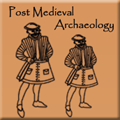 Post Medieval Archaeology The Post Medieval Archaeology is considered as a bi-annual journal study of the material evidence of European society. This period saw the conversion of medieval to industrial society.
Post Medieval Archaeology The Post Medieval Archaeology is considered as a bi-annual journal study of the material evidence of European society. This period saw the conversion of medieval to industrial society. -
 Modern Archaeology In contrast to the antiquarianism of classical archaeology, anthropological archaeology today is concerned with culture history (i.e., the chronology of events and cultural traditions) and the explanation of cultural processes.
Modern Archaeology In contrast to the antiquarianism of classical archaeology, anthropological archaeology today is concerned with culture history (i.e., the chronology of events and cultural traditions) and the explanation of cultural processes.

